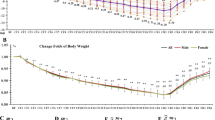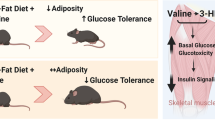Abstract
A four year old child devotes half their total energy expenditure (TEE) to their brains. Even by 10 years-of-age it is still 30% (compared to an adult’s ≈12%). This extreme energy use results from a high brain/body size ratio – combined with a doubling of cerebral gray matter energy utilization (due to synaptic exuberance during cognitive neuromaturation).With extreme energy expenditure goes extreme vulnerability to hypoglycemia: (1) children become hypoglycemic after 24-36 hours of fast (compared to 60-72 hours in adults), and (2) their brains suffer neurological impairment (shown in disrupted P300 potentials) at a lower decrease in plasma glucose: 3.6 - 4.2 mmol L-1 in children rather than < 3.0 mmol L-1 in adults (against a normal level in both of 4.6-4.8 mmol L-1). Human biology has selected adaptations that buffer and protect children from this energy lability. A physiological one is that energy metabolism in skeletal muscles is biased towards using fatty acids, and this minimizes uptake competition of plasma glucose between muscles and the brain. Behavioral adaptations (in human hunter-gatherers) include adults cooperatively pooling high energy foods with juveniles for ≈15 years, this provides juveniles with a reliable ≈3.5-7 MJ per day.Hunter-gatherers share food with juveniles due to gossip enforced indirect reciprocity. This reciprocity depends for its existence upon adult cognitions that require prolonged energy- expensive neuromaturation. This raises the possibility that human adult cognitions are both a cause of children having extreme energy lability (by requiring prolonged energy expensive neuromaturation), and a means (by enabling indirect reciprocity) by which the risks of such lability are mitigated.
Similar content being viewed by others
Article PDF
Author information
Authors and Affiliations
Corresponding author
Rights and permissions
About this article
Cite this article
Skoyles, J. Extreme energy lability in human children: An overlooked and central aspect of human biology. Nat Prec (2012). https://doi.org/10.1038/npre.2012.7097.1
Received:
Accepted:
Published:
DOI: https://doi.org/10.1038/npre.2012.7097.1



